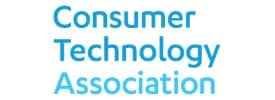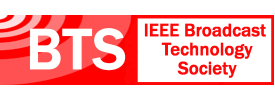- About
- Members
- Sponsors
- Subcommittees
- About Our Subcommittees
- Technology Group 3
- Implementation Team 1 – Advanced Emergency Information
- Implementation Team 2 – India
- Implementation Team 3 – ATSC 3.0 Conformance
- Implementation Team 4 – Brazil
- Implementation Team 5 – Tower Network
- Implementation Team 7 – Caribbean
- Implementation Team 8 – Automotive
- Planning Team 4 – Future Broadcast Ecosystem Technologies
- Planning Team 5 – Automotive Applications
- Planning Team 6 – Global Recognition of ATSC 3.0
- Planning Team 9 – Sustainability
- Technical Documents
- News
- Events
- Spotlight ATSC 3.0
- Contact Us
- Member Login
- Member Meetings
- Advanced Search
Search Site
Member Links
- About
- Members
- Sponsors
- Subcommittees
- About Our Subcommittees
- Technology Group 3
- Implementation Team 1 – Advanced Emergency Information
- Implementation Team 2 – India
- Implementation Team 3 – ATSC 3.0 Conformance
- Implementation Team 4 – Brazil
- Implementation Team 5 – Tower Network
- Implementation Team 7 – Caribbean
- Implementation Team 8 – Automotive
- Planning Team 4 – Future Broadcast Ecosystem Technologies
- Planning Team 5 – Automotive Applications
- Planning Team 6 – Global Recognition of ATSC 3.0
- Planning Team 9 – Sustainability
- Technical Documents
- News
- Events
- Spotlight ATSC 3.0
- Contact Us
- Member Login
- Member Meetings
- Advanced Search
Richer on ATSC Momentum
Posted on May 1, 2014 in ATSC News
President Richer Offers His Perspective with Answers to Big Questions
Evolving ATSC standards seemed to be on everyone’s lips at the NAB Show. What did you hear from attendees about the work now underway for ATSC 2.0 and ATSC 3.0?
Mark Richer: There was a real sense of excitement about the work we are doing and its potential to help propel the broadcasting industry forward. Our ATSC 2.0 demonstrations, showing examples of the convergence of broadcasting and broadband, were very well received as were open dialogs with broadcasting executives about ATSC 3.0
Your executive briefings must have encouraged good discussion about where ATSC is going. What was the feedback from those who attended sessions?
Richer: Our sessions were extremely interactive. The broadcasters and others we met with expressed great optimism for the industry. I was impressed by the number of high-level executives who attended our sessions. They were particularly interested in the business opportunities that ATSC 2.0 and 3.0 will make possible.
How was ATSC 2.0 and ATSC 3.0 discussed at the Broadcast Engineering Conference, before the show floor opened?
Richer: The Broadcast Engineering Conference featured a session dedicated to the development of ATSC 3.0. Our TG3 (Technology Group 3) leadership did an excellent job presenting an overview and status update on the development of ATSC 3.0. Attendees were drinking from a fire hose, but they heard a lot of useful information about our progress on all aspects of next-gen broadcasting standards.
Did it surprise you to hear the FCC Chairman speaking about ATSC 3.0?
Richer: Not really. The Chairman knows that the advancement of technology is key to the success of most industries. It’s important that government and private industry work together to facilitate the development of new technologies that will enable the delivery of new services to the public.
Are more members now signing up to be part of ATSC, because of the standards discussions?
Richer: With the momentum behind ATSC 2.0 and especially 3.0 standards work, new organizations and individuals are getting engaged. So, yes, our membership growth is driven by the growing interest in our work.
Both of the Implementation Teams look to be hard at work. What’s going on with each one?
Richer: Both the ATSC 2.0 I Team and the Mobile Emergency Alert System ITeam have been focused on developing demonstrations to highlight the capabilities of these new and emerging standards. The ATSC 2.0 IT has conducted tests to confirm backwards compatibility with existing television receivers. The M-EAS IT has analyzed and documented the ecosystem necessary to implement this highly important new service.
Where did the idea of the May 7th Boot Camp come from? And who should attend?
Richer: We wanted to provide an opportunity for people who haven’t necessarily been previously involved in the development of ATSC 3.0 to get up-to-speed on this standards development work. The Boot Camp is perfect for broadcast station engineers and others with an interest in learning more about our work on the next- generation television standards.
What’s the timeframe for ATSC 3.0?
Richer: We’re on a fast track for the next-gen standard, and our target schedule is to advance ATSC 3.0 to Candidate Standard status by next spring with the goal of balloting the final standard for approval by the full ATSC membership in the first half of ’16.
Posted in ATSC News
News Categories
News Archives
Subscribe
Subscribe to The Standard, our monthly newsletter. Learn More
Join ATSC
ATSC is a membership organization with both voting and observer categories. Voting members include corporations, nonprofit organizations, and government entities, and they participate actively in the work of ATSC. Observers are individuals or entities not eligible to be a voting member.
Subscribe to our Newsletter
Subscribe to The Standard, our monthly newsletter, to stay up-to-date with ATSC news and events around the world.
Site Links
Contact Us
Advanced Television Systems Committee, Inc.
1300 I Street NW, Suite 400E
Washington, DC 20005
Do you have questions about ATSC?
About ATSC
The Advanced Television Systems Committee, Inc., is an international, non-profit organization developing voluntary standards and recommended practices for digital terrestrial broadcasting. ATSC member organizations represent the broadcast, broadcast equipment, motion picture, consumer electronics, computer, cable, satellite, and semiconductor industries. ATSC also develops digital terrestrial broadcasting implementation strategies and supports educational activities on ATSC standards.
© 2024 ATSC







































